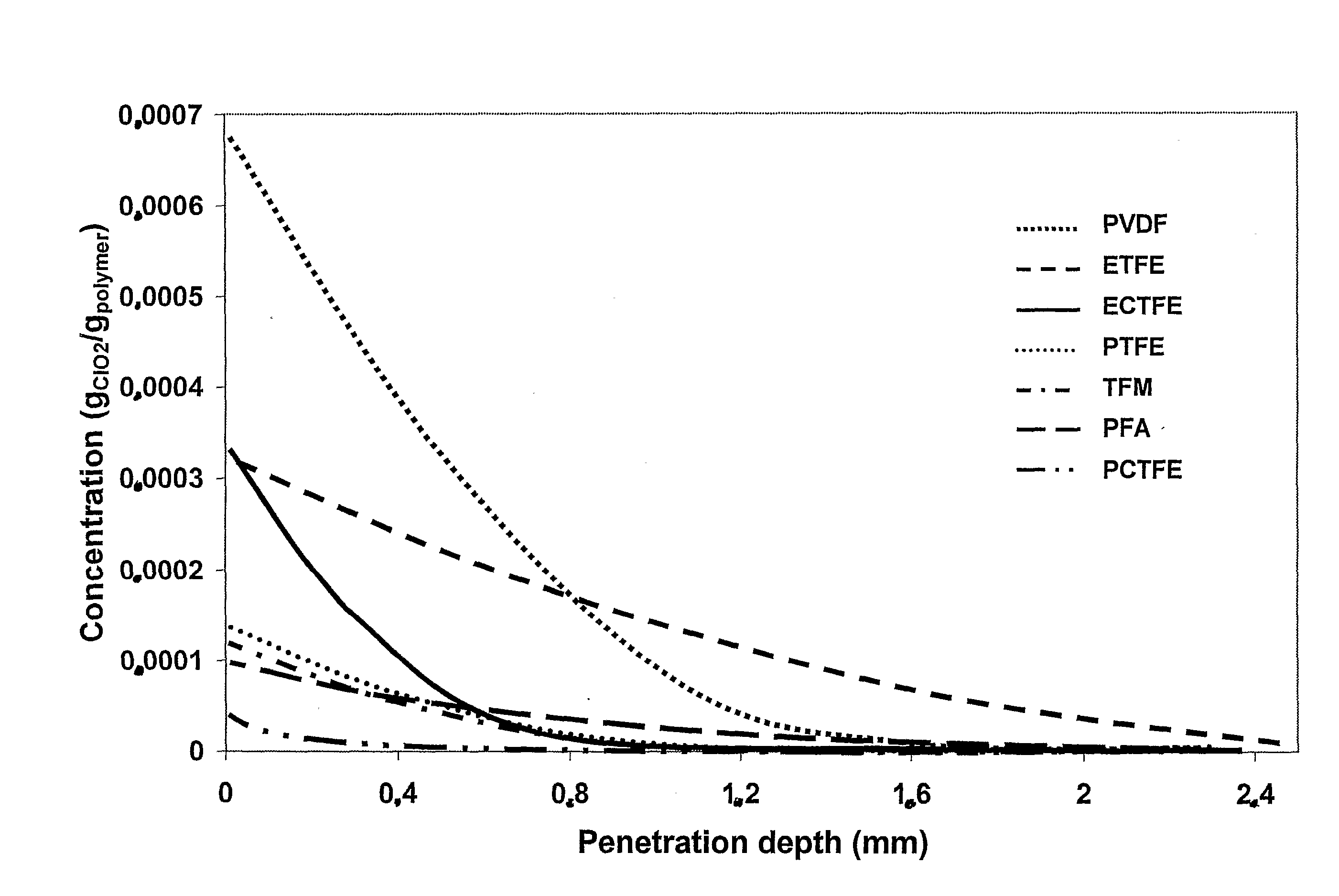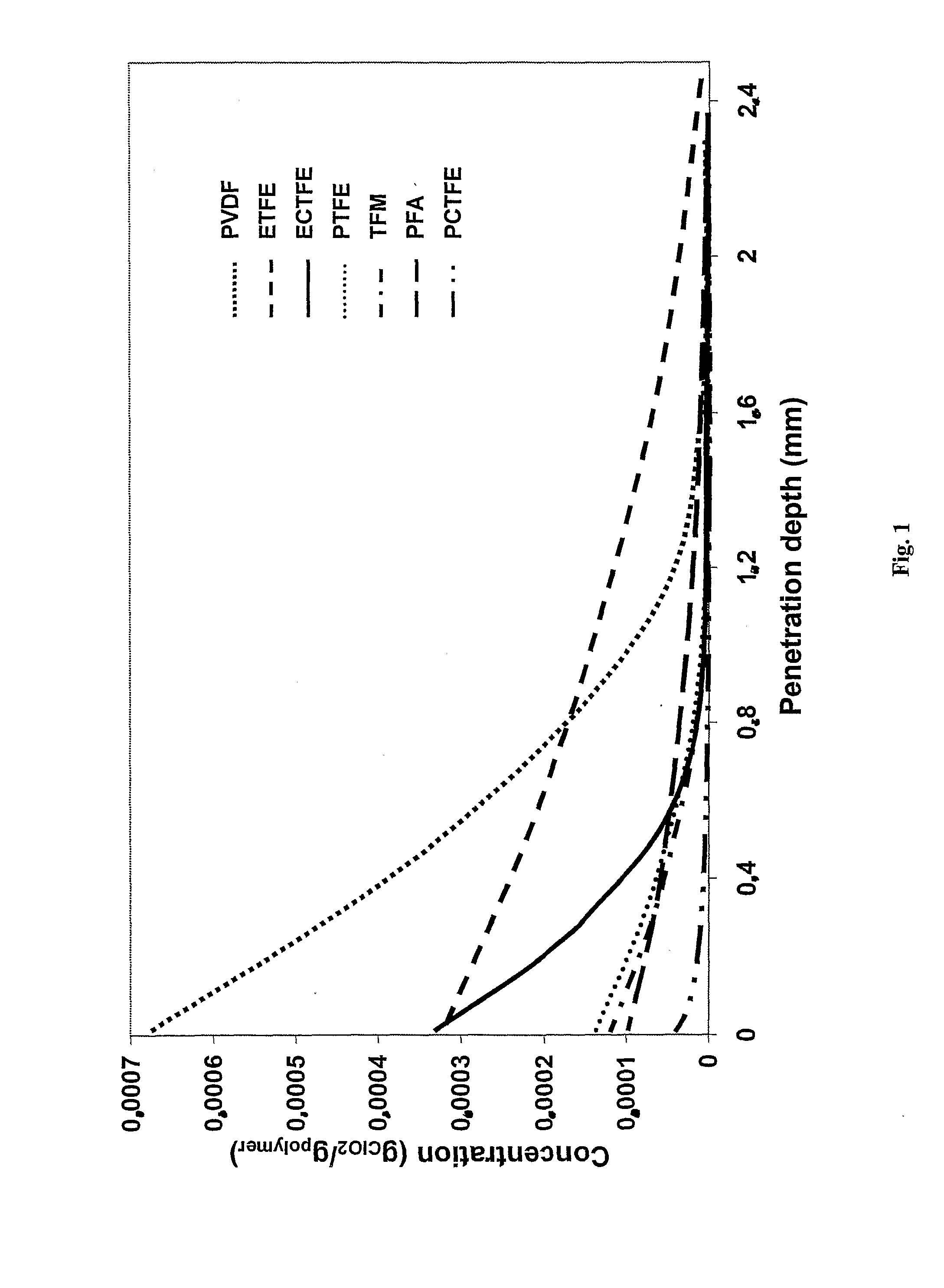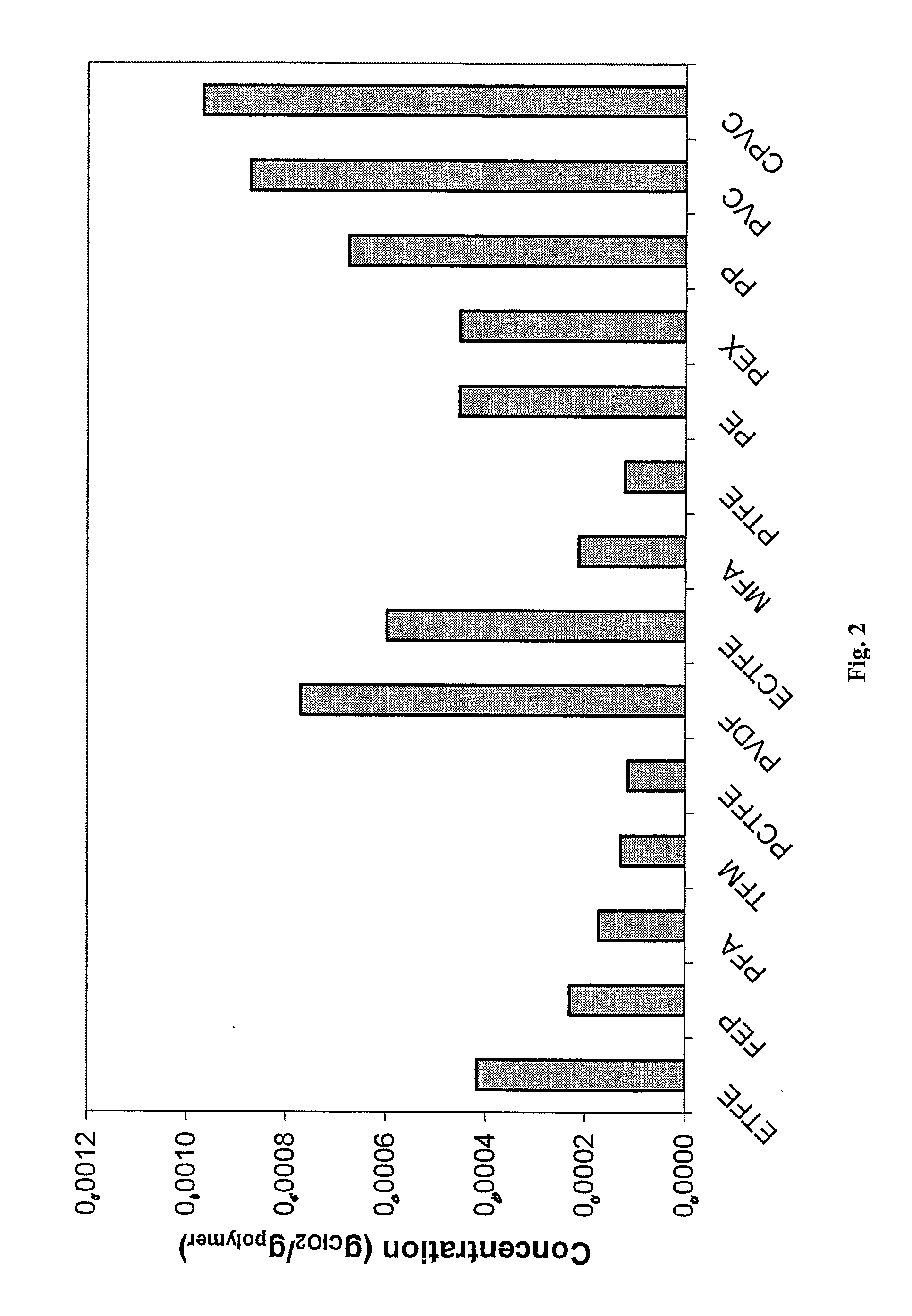Diffusion retardation in fluoroplastics
- Summary
- Abstract
- Description
- Claims
- Application Information
AI Technical Summary
Benefits of technology
Problems solved by technology
Method used
Image
Examples
examples
[0037]After 5 years in service an FRP pipe with a lining of FEP (fluoroplastic), which has been used for transporting Cl2 containing brine, could no longer be used since the lining had loosened completely and obstructed the flow. The reason for the loosening was that Cl2 had diffused through the FEP and destroyed the interface between the FRP and the lining.
[0038]Another example of failure due to diffusion through a fluoroplastic liner concerns a PVDF lined FRP pipe for transport of hot chlorine dioxide bleached pulp. This pipe burst open dumping 600 tonnes of hot pulp on the factory floor. The failure was due to stress corrosion cracking occurring as a result of bad clamping generating stresses in the pipe and ClO2 diffusing through the PVDF attacking the fibre glass in the FRP.
[0039]With the help of new techniques developed by the inventor, data on diffusion, permeation and solubility could be generated for different fluoroplastics. It was found that the diffusion is very fast thr...
PUM
| Property | Measurement | Unit |
|---|---|---|
| Molality | aaaaa | aaaaa |
| Concentration | aaaaa | aaaaa |
| Electrical resistance | aaaaa | aaaaa |
Abstract
Description
Claims
Application Information
 Login to View More
Login to View More - R&D
- Intellectual Property
- Life Sciences
- Materials
- Tech Scout
- Unparalleled Data Quality
- Higher Quality Content
- 60% Fewer Hallucinations
Browse by: Latest US Patents, China's latest patents, Technical Efficacy Thesaurus, Application Domain, Technology Topic, Popular Technical Reports.
© 2025 PatSnap. All rights reserved.Legal|Privacy policy|Modern Slavery Act Transparency Statement|Sitemap|About US| Contact US: help@patsnap.com



